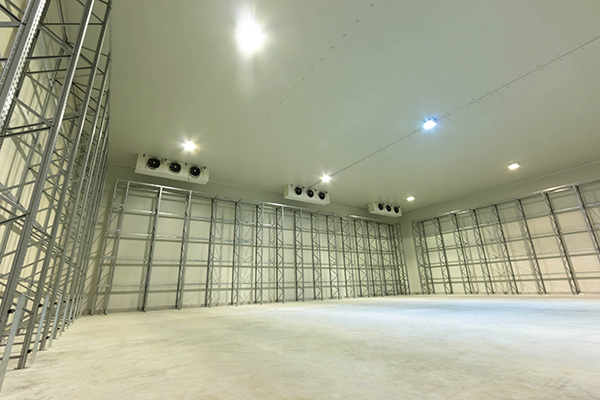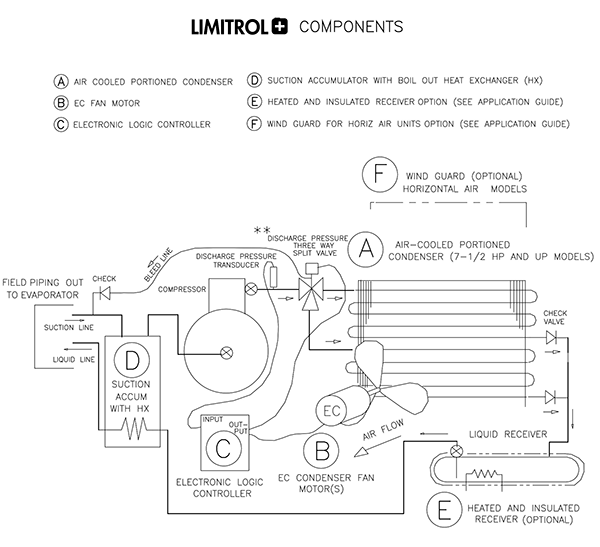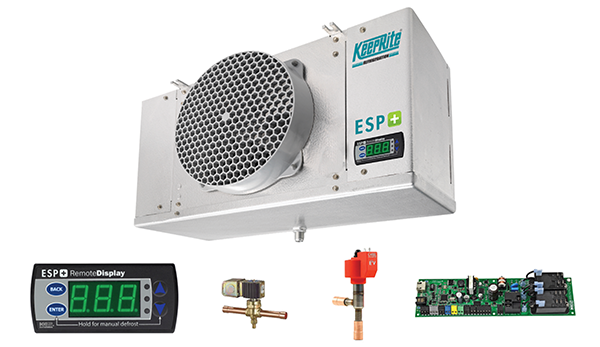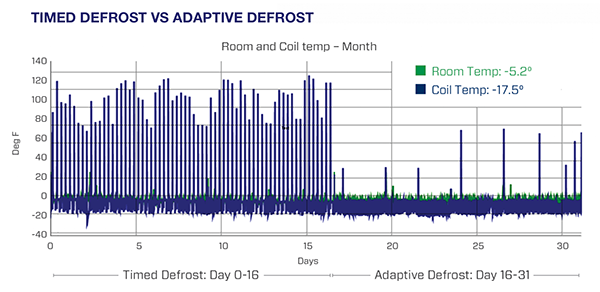
What’s New in Refrigeration
August 30, 2022 | By Dave Demma
Smart electronic technologies are improving operational efficiencies for refrigeration projects.

(photo: PATBOON/Adobe Stock)
Progress in most industries results from new ideas being provided with sufficient capital to undergo the necessary research and development to ultimately become a reality in the marketplace.
Every year, manufacturers present their current offering of the latest and greatest products to the marketplace, and every now and then some technologies knock it out of the park.
In this article I’m going to discuss a couple new solutions that have been game changers in recent years.
First, let’s consider a large refrigeration project. For our example, let’s say you’ve finished the easy part of the equipment installation for a refrigerated beer distribution facility:
- Arranging the crane to set the condensing unit on the roof
- Installing three high profile evaporators in the warehouse
- Installing the pipe hangers, installing/brazing the piping
- Insulating the piping, including the messy gluing portion
- Overseeing the electrician who is running the three-phase power to the condensing unit and evaporators
- Overseeing the control wiring
- Leak testing and evacuating the system
- Putting an initial charge in the system
Now comes the hard part, startup and commissioning:
- Supplying power to the evaporator fan motors
- Supplying power to the compressor
- Fully charging the system
- Calculating and adding the extra charge needed for the condenser flooding valves to maintain the minimum head pressure during the low ambient conditions
- Setting the space temperature
- Setting the cut-in and cut-out on the low pressure control and high pressure control
- Checking compressor oil level, and adding necessary oil to maintain the manufacturer’s recommended oil level
- Checking compressor oil pressure and verifying that the oil safety switch is working correctly
- Checking evaporator fan and compressor motor amperage
- Setting defrost schedule to manufacturer’s specification
- And the fun part, getting up on a scissor lift and setting the thermal expansion valve (TEV) superheat to manufacturer’s specification
Startup and commissioning can be very time consuming, especially with larger more complex systems. But, what if the availability of new technology could shorten the time for startup and commissioning and result in a more efficiently operating system?
Well, of course I wouldn’t be asking the question if an awesome answer couldn’t be provided. Let me cover two smart technology options that are currently available for the refrigeration sector that can help.
Limitrol+ Floating Head Pressure Control System
Condenser capacity is based on several factors: physical size of the condenser fin/tube bundle, fin spacing, air flow provided by the condenser fan motors, and the thermodynamic properties of the refrigerant flowing through the condenser.
While the condenser should be selected for the design condition (aka, the most miserably hot day that the equipment will likely need to operate in), for most of the year when the conditions are milder than the design condition, the condenser will be oversized.
This is good, but only to a certain point. The lower condensing pressure resulting from milder ambient conditions allows for a more efficient compressor operation. This yields a greater compressor capacity, which can reduce compressor run time, or allow for cycling a compressor off in a multi-compressor application.
As with some good things, too much of a good thing becomes a bad thing. The lynch pin with an oversized condenser is how the reduced condensing pressure (which results in a lower liquid pressure) can negatively affect the TEV capacity.
TEV capacity is based on three system parameters: (1) evaporator SST, (2) liquid temp. entering the TEV, and (3) pressure drop across the TEV port.
The lower liquid pressure during low ambient conditions results in a lower pressure drop across the TEV port. If the liquid pressure continues reducing during low ambient conditions, the pressure will eventually drop to a level that results in a TEV capacity that is smaller than the evaporator load. At this point, the TEV becomes undersized. So, some method is required to ensure the liquid pressure never reduces to a level where this can happen. One popular method is to use condenser flooding valves to maintain a minimum condensing pressure (which in turn maintains a minimum liquid pressure).
This is accomplished by allowing liquid refrigerant to back up into the condenser (flooding the condenser), which then reduces the size of the condenser. While the operation of these valves merits a lengthy discussion of its own (which is not the point of this article), suffice it to say that the result of condenser flooding valves is a minimum head pressure which the system will never operate below.
While this method of head pressure control provides very consistent head pressure during low ambient conditions, it requires: (1) determining (and adding) the extra refrigerant charge the system needs to properly flood the condenser at the lowest ambient temperature expected, while still maintaining a liquid seal in the receiver, and (2) the obvious extra expense of refrigerant.

A piping schematic of LIMITROL+ and components.
In addition, given that every single system will develop a refrigerant leak at some point in its life span, the resulting recharge after the leak repair will be costlier. And then there is the extra refrigerant that will enter the atmosphere and the environmental impact.
The Limitrol+ offers the following features which eliminate the extra refrigerant charge typically associated with maintaining minimum head pressure, and also result in a more efficient system operation:
- An electronic controller, which senses discharge pressure via a pressure transducer. The controller is factory pre-set to maintain a minimum 70F condensing temperature.
- Variable speed EC condenser fan motors respond to DC voltage signal, which allow the motor speed to decrease/increase based on the discharge pressure. During periods of lower ambient temperatures, the fans may operate at their minimum RPM, yet result in a discharge pressure that is still below the controller’s minimum condenser temp. set-point. When this occurs…
- A condenser split valve is initiated, which will remove a portion of the condenser from operation, and simultaneously, the controller will ramp the EC motor speed to allow a realistic RPM starting point to maintain the minimum head pressure with the reduced condenser surface.
The condenser split eliminates the need for flooding valves (down to ambient temperature of -20F), reducing refrigerant charge. The EC motors maintain precise head pressure during conditions below the design condition, and reduce electrical consumption over standard motors.
ESP+ Intuitive Evaporator Control Technology
As I have written about previously, the real beauty of electronic control is its ability to provide precise and repeatable results. Nowhere is this more apparent than in the ability of an electronically controlled step motor electric expansion valve (EEV) to maintain precise superheat control.

The ESP+ intuitive evaporator control technology includes: (l-r) on-board display, liquid line solenoid valve, electronic expansion valve (EEV), and an adaptive defrost control board.
As great as this benefit is, this is only one of many unique features offered with the ESP+ evaporator control technology. The Adaptive Defrost Controller eliminates the need for a mechanical thermostat and defrost time clock, and controls all aspects of the evaporator operation, including the following:
- Monitors the superheat condition at the evaporator outlet via a temperature sensor and pressure transducer. Instead of spending upwards of an hour to properly set a mechanical TEV, the superheat set-point is entered into the controller, resulting in precise superheat control.
- Maintains precise temperature in the refrigerated space. When temperature set-point is achieved, the controller will de-energize the factory mounted liquid solenoid valve.
- Reduces EC fan motor speed when temperature is satisfied, resulting in further energy savings.
- Initiates and terminates defrost as needed (true demand defrost), offering considerable energy savings over conventional defrost.
- Allows for bonding of up to eight controllers, maintaining the same high efficiency on multiple evaporator applications.
- Capability for remote monitoring, remote set-point changes, and alarm capabilities via text or email.
- With all of the defrost controls at the evaporator, no wiring between condensing unit and evaporator is required.

Chart displays benefits of adaptive defrost control including 86% fewer defrost cycles leading to greater energy savings and enhanced system performance including improved integrity of refrigerated/frozen product.
Simplicity is always sought after, but it’s rare that simplicity results in state of the art. Both of these award-winning solutions combine both. The benefit to the refrigeration installer and service technician is a time saving installation, simple setup and adjustment, and troubleshooting aided by remote monitoring and performance history.
The end user will realize greater efficiency, greater stored product integrity from precise temperature control, and the peace of mind knowing that any system malfunction is an email or text message away.
Who can argue that?

 Dave Demma holds a degree in refrigeration engineering and worked as a journeyman refrigeration technician before moving into the manufacturing sector where he regularly trains contractor and engineering groups. He can be reached at ddemma@uri.com.
Dave Demma holds a degree in refrigeration engineering and worked as a journeyman refrigeration technician before moving into the manufacturing sector where he regularly trains contractor and engineering groups. He can be reached at ddemma@uri.com.


